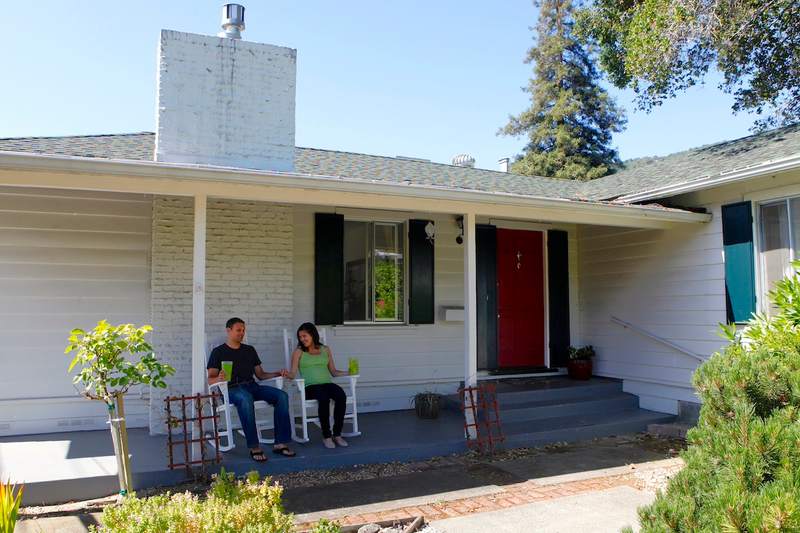There are plenty of times in life when you may need cash at the ready but don’t know the best source to get it. For example, you might want to consolidate debt and take several high-interest payments into one low-interest payment.
A home equity loan is a popular method to take advantage of the equity in your home and turn it into the cash you need, but it’s not your only option. We’ll go over what a home equity loan is and some popular alternatives if you’re looking for a home equity loan alternative.
What Is A Home Equity Loan?
A home equity loan is a type of second mortgage that uses the equity in your home as collateral for a one-time, lump sum payment. Once you receive the money, you pay it back like you pay your original mortgage. You have monthly payments based on a fixed interest rate over a set number of years. This payment will be in addition to your existing monthly mortgage payments.
However, there are many alternatives to home equity loans that may be a better option for you.
See What You Qualify For
Buy A Home
Discover mortgage options that fit your unique financial needs.

Refinance
Refinance your mortgage to have more money for what matters.
Tap Into Equity
Use your home’s equity and unlock cash to achieve your goals.
Why Consider Home Equity Loan Alternatives?
Home equity loans are an excellent resource for big purchases that pay off in the long run. You can use them for your child’s college education or home improvements to increase your home’s value. They can also be a valuable tool to consolidate debt from multiple sources with high interest rates. But they’re not always suitable for every person or purchase.
Home equity loans are paid in one lump sum, so if you need long-term financing for an unknown amount, it can be hard to predict how much to borrow. Home equity loans also come with the same risk as your original mortgage. Most critically your home is collateral so it’s important to make timely monthly payments. Keep in mind you usually need more than 15% – 20% equity in your home to apply for a home equity loan. Equity loan amounts are based on max loan to value for a home including other mortgages.
Alternatives To Home Equity Loans
If you don’t know exactly how much money you need, don’t have enough equity in your home or don’t want another mortgage payment, check out the alternatives to home equity loans below.
1. Home Equity Line Of Credit (HELOC)
A home equity line of credit (HELOC) is a type of second mortgage that functions differently from a home equity loan. With a HELOC, you can draw from a line of revolving credit instead of receiving a lump sum of money. Like a credit card, you can take out an amount of money up to your credit limit and make monthly payments toward whatever you take out.
With a HELOC, you can take out cash only when you need it. You will have monthly minimum payments during the first part of your loan, or draw period, to cover the interest of the loan. Eventually, you need to pay back the loan balance on the money you’ve borrowed.
Essential Pros And Cons Of A HELOC
Every loan option comes with benefits and disadvantages. Let’s take a look at the main ones for a HELOC.
Pros: The main advantage of a HELOC is the flexibility. This is why HELOCs may work better than home equity loans if you are paying for a long-term project. Especially if you don’t know the exact cost ahead of time.
Cons: The main downside to a HELOC is you pay adjustable interest rates versus the fixed rates of a home equity loan. You will also still be using your home collateral.
Lender Requirements For A HELOC
Since HELOCs are collateral loans, you’ll need to meet specific lender’s requirements to get a HELOC. To qualify for the loan you’ll generally need to meet the following criteria:
- An updated appraisal of your home’s value
- At least 15% – 20% equity in your home, though more is likely needed
- A 620 credit score or higher
- A debt-to-income (DTI) ratio of around 43% or less
2. Cash-Out Refinance
A cash-out refinance is a great home equity loan alternative if you want to avoid managing two mortgage payments simultaneously. It’s similar to traditional refinance in that you pay off your existing mortgage and sign a new one.
With a cash-out refinance, you can get a larger mortgage and take out up to 80% of the value of your home equity in cash. Once the process is complete, you could have money from your equity, lower monthly payments and still only one mortgage to pay. Keep in mind that for a cash-out refinance you’ll need to set money aside for closing costs upfront.
Essential Pros And Cons Of A Cash-Out Refinance
Considering a cash-out refinance? Here are some of the main points to consider.
Pros: The biggest pro of a cash-out refinance is not having to manage two monthly payments. You’ll also get your money in a lump sum upfront.
Cons: One con that can get overlooked with a cash-out refinance is that it restarts your loan. This might not seem like much, but it slows down how quickly you accumulate equity. This is because when you get a new loan your amortization schedule resets.
Still not sure if a cash-out refinance is right for you?
Check out our refinance calculator to see if you can get cash out of your home and a smaller mortgage payment.
3. Personal Loans
If you don’t have enough equity in your home to qualify for a home equity loan or HELOC, a personal loan may be right for you. Most personal loans are unsecured loans, meaning your home or possessions aren’t securing the loan.
Essentials Pros And Cons Of A Personal Loan
Think a personal loan might be the better option for you? Here are the main factors to consider.
Pros: Personal loans are a good alternative for those with great credit scores who need a smaller amount of money than home equity loans or HELOCs offer.
Cons: Like personal loans, unsecured loans have some drawbacks. They require higher credit scores and have higher interest rates. Lenders may offer lower amounts of money to compensate for this lack of security. They may also have shorter repayment periods.
4. Credit Cards
Depending on your needs a credit card might be a viable option for your borrowing needs. Much like a personal loan, credit cards are best suited for loans in smaller amounts. Like a HELOC, they’re great if you need flexibility or you don’t know exactly what your expenses will be.
Though a credit card is unlikely to have lower interest rates than an equity loan, it might be comparable or less expensive than a personal loan. Some credit cards even have 0% interest introductory offers which allow you to defer interest payment for the first year. That said, depending on your situation they can be a great option.
Essentials Pros And Cons Of A Credit Card
Sound like a credit card might be a good fit for your needs? These are just some of the pros and cons to keep in mind.
Pros: Some advantages of a credit card are that you enjoy flexible spending and possibly low introductory interest rates.
Cons: Some drawbacks of credit cards are overall high interest rates, strict repayment terms and even variable interest rates – depending on the card.
5. Sale-Leasebacks
A sale-leaseback or rent-back is a common way that homeowners bridge the gap between selling one home and buying another. But did you know it can also be a way to access your equity while staying in your home?
Though long-term sale-leaseback arrangements might not be the go-to, they can be a great option for those willing to sell who don’t want to move right away. Depending on the terms of your agreement a sale-leaseback can be a short or long-term arrangement.
Essentials Pros And Cons Of A Sale-Leaseback
A sale-leaseback is a choice that might work best for you. Here are some of the points to consider.
Pros: The main advantage of a sale-leaseback is that you gain access to all of your equity once the sale is completed. So you’re free to use your money as needed.
Cons: The main disadvantage of this arrangement is that you no longer own your home. Though this might seem small it means you’re no longer gaining equity when you make payments or when the value of your house increases.
Turn your home equity into cash.
See how much you could get.
Home Equity Loan Alternatives FAQs
Still can’t decide if a home equity loan is right for you or if you want to use an alternative like a HELOC or personal loan? Let’s take a look at related FAQs.
How long does a home equity loan take?
Though it varies by lender, you can often get a home equity loan in about a month. Approval for other types of loans can be faster or slower. Any financing that requires underwriting like a cash-out refinance, home equity loan or HELOC might take a little longer. While a personal loan or credit card could be approved more quickly. Check with your lender for exact timelines.
Does a cash-out refinance change my loan amount?
Yes, a cash-out refinance will change the loan amount for your primary mortgage. When refinancing with a cash-out refinance you take a lump sum of the equity in your home. In most cases, this will result in a change to your monthly payment.
Do personal loans have closing costs?
No, personal loans don’t have closing costs. While most equity-based loans will require an underwriting process and some considerable upfront fees, personal loans are based on your creditworthiness. You might have to pay other fees with a personal loan like a loan origination fee, late fees or possible prepayment penalties.
The Bottom Line
There are many enticing alternatives to home equity loans, but the best option depends on your financial situation. Ready to consolidate your debt or start on those kitchen renovations you’ve always wanted?

Patrick Russo
Patrick is a writer and researcher with expertise in real estate and insurance. When he is not writing, you can find him hanging out with his family and friends or walking around Washington, D.C., listening to an audiobook.












